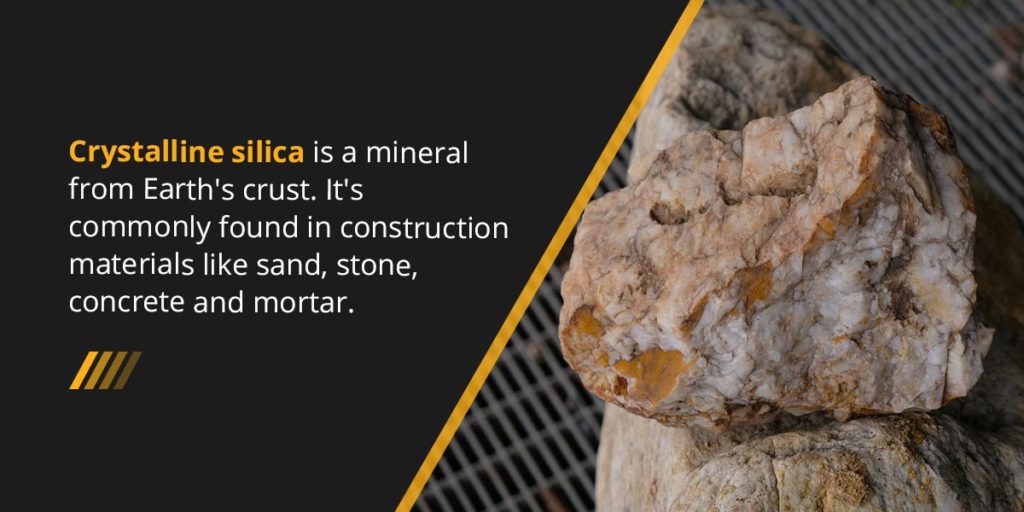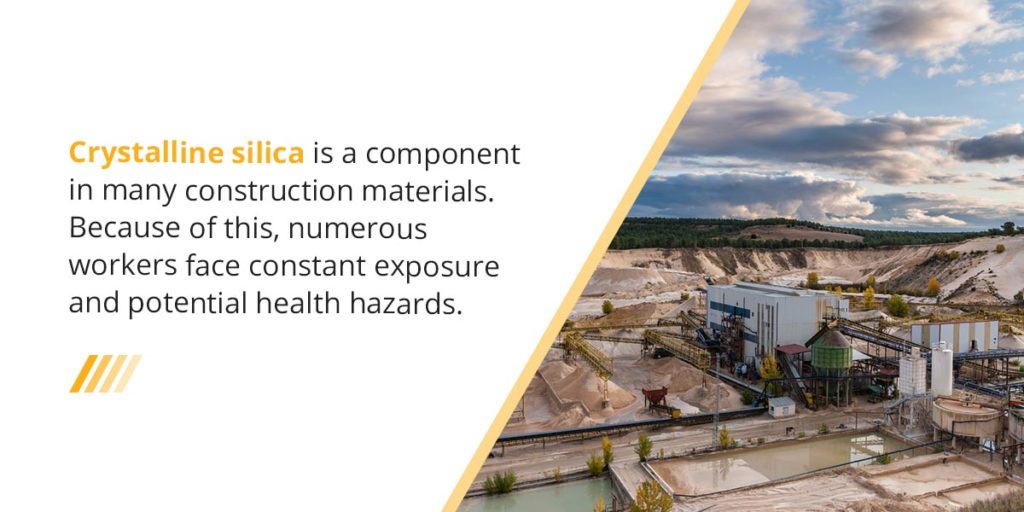**New OSHA Silica Exposure Rules**
Updated: December 22, 2023
Exposure to crystalline silica has long been recognized as a serious health risk. Crystalline silica is a naturally occurring mineral found in many construction materials such as sand, stone, and concrete. Prolonged exposure to respirable silica dust can lead to severe and often irreversible health issues, including lung disease, cancer, and kidney damage.
OSHA has updated its regulations to further protect workers from the dangers of silica exposure. These new standards apply to both construction workers and those in general industry and maritime sectors. The rules aim to reduce exposure levels and ensure that employers implement effective control measures to keep their workforce safe.
At Finishing Systems, we are committed to the safety and well-being of our employees and customers. We believe it's important for all companies to stay informed about evolving safety regulations and take proactive steps to protect their workers.
If you have any questions or need more information about the revised OSHA silica standards, we recommend visiting the official OSHA website or using their On-Site Consultation Program. This program offers expert guidance to help identify and mitigate silica-related risks in your workplace.
The two key standards cover:
- Construction workers
- General industry and maritime workers
While the construction standard has been in effect since September 23, 2017, the general industry and maritime rule became effective on June 23, 2018. These standards apply to workers who handle loose silica-containing materials or perform tasks that generate airborne silica, such as cutting, drilling, and grinding.

### What Is Crystalline Silica?
Crystalline silica is a mineral found in the Earth’s crust. It is commonly present in materials like sand, stone, concrete, and mortar. It is also used in products such as glass, ceramics, and pottery.
There are several forms of crystalline silica, including:
- **Quartz:** The most common form, found in nearly all types of rock. Due to its abundance, it is frequently encountered in construction and mining environments.
- **Cristobalite:** A rare form, typically found in volcanic rocks or meteorites. It may also form when quartz is heated at high temperatures.
- **Tridymite:** Another rare form, which is less commonly encountered in workplaces.
When these materials are cut, drilled, or ground, fine silica particles can become airborne and be inhaled, leading to serious respiratory conditions.
### The Effects of Silica
Respirable silica refers to very fine dust particles that can be inhaled deep into the lungs. These particles are at least 100 times smaller than a grain of sand and can result from various construction and industrial activities, such as:
- Cutting
- Sawing
- Drilling
- Grinding
- Crushing
- Pulverizing
Other processes like abrasive blasting, hydraulic fracturing, and foundry work can also release respirable silica into the air. Inhaling this dust can lead to serious health conditions, including:
- **Silicosis**, an incurable lung disease
- **Lung cancer**
- **Chronic obstructive pulmonary disease (COPD)**
- **Kidney disease**

### How Are Workers Exposed to Crystalline Silica?
Workers in construction and industrial settings are often exposed to crystalline silica through daily tasks. Activities like operating power tools, using demolition equipment, or engaging in abrasive blasting can release fine silica dust into the air.
Common tasks that may expose workers include:
- Using saws, drills, or jackhammers
- Operating crushing machines or vehicle rigs
- Milling or tunneling operations
- Using abrasive blasting tools
OSHA estimates that over 600,000 workplaces are affected by silica exposure each year. Given the potential health risks, it's crucial for employers to follow OSHA guidelines and implement proper protective measures.
### OSHA Silica Exposure Standards
Under OSHA standard 1926.1153, employers must limit worker exposure to respirable crystalline silica and implement appropriate controls. This includes using dust control methods, providing respirators when necessary, and maintaining an exposure control plan.
Key requirements include:
- Developing and maintaining an exposure control plan
- Designating a competent person to oversee compliance
- Providing medical exams, including chest X-rays and lung function tests
- Training workers on the hazards of silica and how to stay safe
- Keeping detailed records of exposure and medical evaluations
Employers must also assess silica exposure levels and take corrective actions if needed. For example, if a worker uses a saw indoors for more than four hours, they should wear a respirator.
### Solutions for Crystalline Silica Inhalation
To minimize the risk of silica inhalation, employers can use a combination of personal and general protective measures, including:
- Respirators and face masks
- Dust collection systems and filtration devices
- Regular cleaning and removal of silica dust
- Proper ventilation and engineering controls
These solutions help reduce exposure and protect workers from long-term health effects.

### Protecting Workers With Help From Silica Exposure
At Finishing Systems, we prioritize the safety of our team and our clients. We recently conducted monitoring and testing to ensure our workplace meets the highest safety standards.
If you're looking for reliable safety equipment and supplies to protect your workers, contact us today. We offer a wide range of protective gear and resources to help you create a safer working environment.
Your employees are your most valuable asset — protecting them is not just a legal requirement, but a moral responsibility.
**SHARE:**
Grinding Agitator Machine,Grinding Mixer,Small Grinder Mixe,Grinder Mixer Machine
wuxi top mixer equipment co.,ltd , https://www.wxtpmixer.com